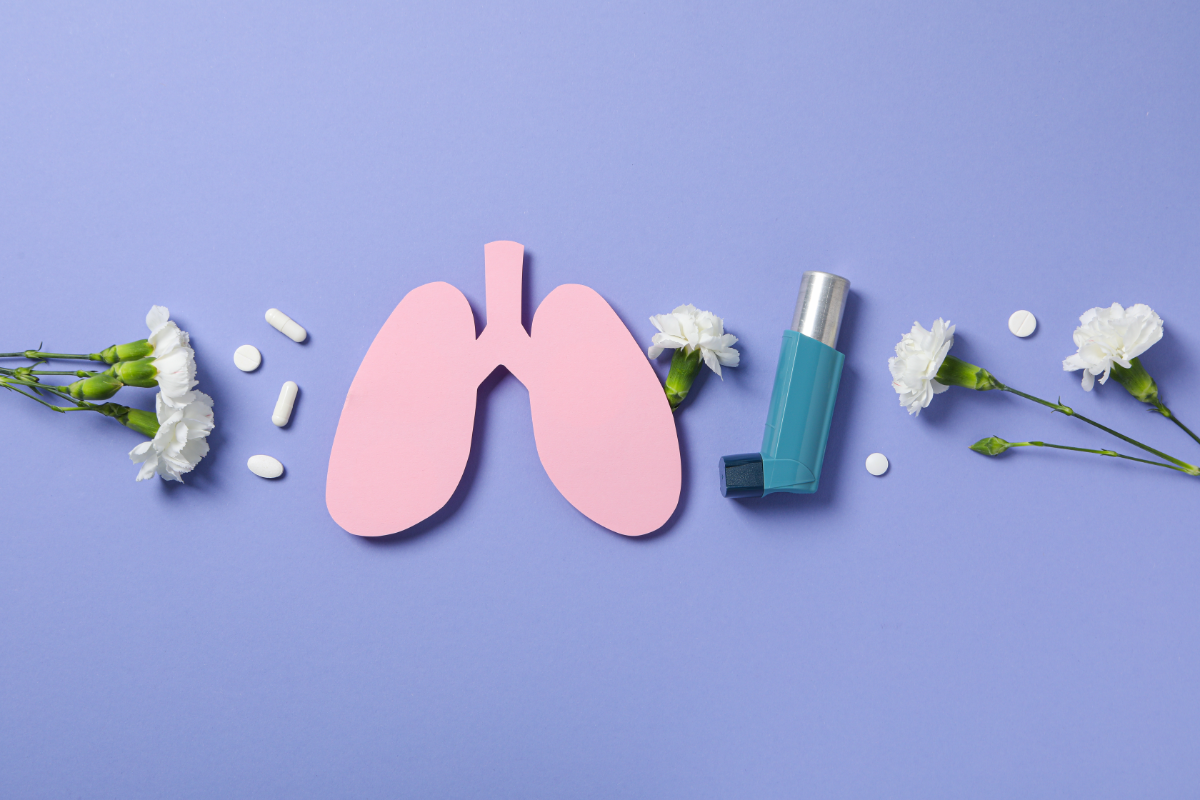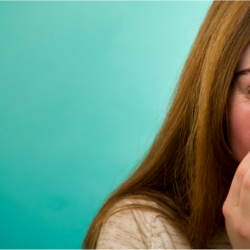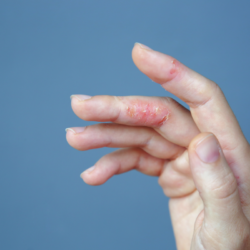Allergies have risen sharply in recent decades. In Western countries, one person in four has clinical symptoms of allergy. Allergic respiratory diseases affect almost 90 million Europeans and 65 million people in the United States.
Allergy is an inappropriate reaction of the immune system to a substance foreign to the body (allergen). The number of people affected continues to rise year on year.
Traditional vs. natural treatment
When it comes to treating seasonal allergies, there is a fundamental distinction between traditional medical treatments and natural approaches. Treatment options are chosen on the basis of their efficacy, ease of administration and safety profile for the patient.
Overview of traditional medical treatments
Traditional medical treatments for seasonal allergies generally include antihistamines, nasal corticosteroids and decongestants. These medications are designed to provide rapid relief of symptoms by acting on the immune system and the inflammatory reactions that underlie allergies.
Antihistamines work by blocking histamine, a chemical released by the immune system during an allergic reaction. Nasal corticosteroids are used to reduce inflammation in the nasal passages. Decongestants help relieve nasal congestion, making it easier to breathe.
Although these treatments are effective for many patients, they can also have side effects, such as drowsiness in the case of certain antihistamines, or local irritation in the case of nasal sprays.
Why opt for natural allergy treatments?
Natural treatments for seasonal allergies appeal to those looking for solutions that are less aggressive on the body and without the side effects often associated with traditional medicines. Natural approaches can include dietary changes, the use of supplements such as quercetin or bromelain, and the adoption of healthy lifestyle practices.
A key advantage of natural treatments is their ability to work with the body by strengthening the immune system rather than suppressing it. In addition, natural treatments, such as phytotherapy and aromatherapy, can have overall beneficial effects on well-being in addition to their impact on allergies.
Natural treatments often require a more personalised approach, taking into account the individual as a whole rather than focusing solely on symptom control. This personalisation can help to address the underlying cause of allergies, offering a more sustainable solution that is more in harmony with the body.
It is important to note that although natural treatments can be extremely beneficial, they must be chosen and used judiciously, ideally under the supervision of a healthcare professional, to avoid interactions and ensure their effectiveness. In addition, natural treatments can complement traditional methods, offering an integrated approach to managing seasonal allergies.
The main pathogens that cause allergies
Many substances present in our environment can cause allergic disorders:
- pollens
- dust mites
- certain foods (strawberries, shellfish, peanuts, soya, beans, eggs, fish, vegetables, sesame seeds, sunflower seeds, mustard seeds, cow’s milk proteins, etc.),
- insects, pets, cockroaches,
- medicines,
- moulds,
- latex,
- jewellery components.
The mechanism of an allergic reaction
The biological phenomenon leading to the development of an allergy involves 2 successive phases: an initial phase of asymptomatic ” sensitisation ” (=without symptoms) and a2nd phase of symptomatic ” allergic reaction ” (=with symptoms).
Sensitisation: first contact
This phase begins when the individual comes into contact with the allergen for the first time. The allergen is then recognised and considered a dangerous substance by certain immune system cells present in large quantities in the skin and mucous membranes. These cells present the allergen on their surface and enable other cells to produce Immunoglobulin E (also known as IgE, these are antibodies produced by the immune system in response to external aggression).
The allergic reaction (subsequent contact)
During subsequent contact between the allergen and the “sensitised” organism, the allergen binds to the IgE antibodies present on the surface of mast cells (regulatory cells essential for modulating inflammatory and allergic processes), causing mast cell activation. Histamine and inflammatory mediators are then released. Histamine plays a key role in the allergic reaction.
Natural allergy treatments
Herbal medicine to combat allergies:
- Blackcurrant: blackcurrant (Ribes nigrum) is commonly used in traditional medicine to control allergy symptoms. A polysaccharide extracted from blackcurrant has been shown to relieve ocular and nasal symptoms.
We recommend using it in the form of an EPS mixed in equal parts with turmeric to reinforce its anti-inflammatory action and boost immunity.
- Nettle: Nettle contains a substance that acts as a natural antihistamine. In particular, it soothes hay fever symptoms (blocked nose and watery eyes). You can find dried nettle leaf capsules in health food shops. Take 300 mg three times a day, and increase the dosage (to 500 or 700 mg) if it is ineffective.
- Ginseng Panax ginseng extract contains ginsenosides, which have an anti-allergic effect on cell membranes and help to calm the inflammation caused by allergies.
- Ginkgo biloba Ginkgo biloba, best known for its positive effects on memory, is also an effective anti-allergic because it contains ginkgolides, substances that counteract the chemicals that trigger allergies (platelet-activating factor). You can take up to 240 mg a day.
- Plantain: Plantain is anti-histamine. It inhibits mast cell degranulation. In infusion form, plantain will calm allergic asthma in particular.
Micro-nutrition to combat allergies:
- Omega-3s: Omega-3s are a good natural treatment for inflammation in general, and can therefore reduce the inflammatory reactions associated with allergies. These fatty acids are found in particular in salmon, sardines, tuna and mackerel. If you prefer to take fish oil in capsule form, choose a supplement combining EPA and DHA (the two most active forms of omega-3). Dosage is 500 to 1000 mg EPA/DHA per day. Flaxseed oil is also a good source of omega-3 for treating allergies naturally. You can take one tablespoon a day, adding it to a vinaigrette or fruit juice, for example, or adding it to a dessert. Avoid heating it.
- Quercetin: Quercetin, the pigment that gives black grapes their purple colour and green tea its green colour, inhibits the release of histamine (Warning: do not take quercetin at the same time as nettle capsules, as nettles also contain quercetin)
- Spirulina: A microscopic blue-green algae renowned for its antioxidant and anti-inflammatory properties. Clinical studies have shown that spirulina can act as a natural antihistamine, inhibiting the release of histamine and therefore the cascade of allergic symptoms. Spirulina is rich in phytonutrients that can help boost the immune system and reduce sensitivity to allergens. For seasonal allergies, spirulina should be considered as a dietary supplement, with the recommended dosage varying according to the age and physical condition of the individual. It is advisable to start with a low dose and gradually increase it, monitoring the body’s reactions.
- Probiotics: Living micro-organisms, often referred to as ‘friendly bacteria’. They contribute to the balance of the intestinal flora and play a key role in maintaining a healthy immune response. A balanced intestinal flora is essential because a large part of the immune system is housed in the intestine. Research has shown that introducing probiotics into the diet can help regulate the immune response and, potentially, reduce the frequency and severity of seasonal allergy symptoms. Probiotics are often consumed regularly through fermented products such as yoghurt, kefir or supplements.
For a complete action on the body, you can also turn to the food supplement Polanine from the Santé Verte laboratories, which is a complex of 13 natural active ingredients: Lovage (anti-oedematous), Hyssop (mucolytic and pulmonary analgesic), Andrographis (anti-inflammatory action on the upper respiratory tract), Quercetin, Feverfew (for its action on headaches), Turmeric, Black pepper, Manganese (calm the inflammation process)
Gemmotherapy to combat allergies
With the Allargem complex which:
- Balances the allergic system
- Provides rapid relief
- Maintains vitality without addiction
- Stimulates the immune system
3 extracts make up this complex for enhanced, optimal action:
- Blackcurrant bud: is a major anti-allergy agent. It tones the endocrine glands, particularly the adrenal glands, naturally increasing the level of cortisol in the blood. Blackcurrant was once known as the most powerful antidote. It is effective in all cases of allergy.
- Rosemary seedling: has an anti-toxic effect on the liver. It traps free radicals and effectively combats fatigue and drowsiness. Thanks to its action, the body eliminates allergic toxins.
- Propolis: reputed to be a hive antibiotic, it boosts the body’s resistance. This vegetable mastic is harvested by bees from the buds of certain trees and aromatic plants. It therefore combines perfectly with other buds. Its anti-allergic, anti-viral and antibiotic action is due to the presence of aromatic resins (flavonosides, essential oils) which are powerful stimulants of the immune system (increased synthesis of antibodies). It has a particular effect on the respiratory system.
Homeopathy to combat allergies
- Lung histamine 15CH: To be taken systematically, to modulate the mechanism of the allergic reaction (5 granules a day).
- Pollens 30CH : In the event of allergy to pollens (5 granules a day).
- Apis mellifica 15CH : In case of oedema of the mucous membrane or nasal obstruction; to be used automatically with “lung histamine” (5 granules a day).
- Allium cepa 9CH : In case of aqueous and abundant nasal discharge, excoriating the upper lip and around the nostrils, improved by fresh air (5 granules every 2 hours).
- Nux vomica 9CH: In case of sneezing in bursts on waking, blocked nose at night, aggravated by the slightest draught (5 granules every 2 hours).
- Sabadilla 9 CH : For spasmodic sneezing, itching of the soft palate, hypersensitivity to the smell of flowers (5 granules every 2 hours).
In conclusion:
Finally, to fight allergies naturally, we recommend a liver detox: it’s the liver that manages our body’s histamines.
When the liver is overworked and clogged, a series of health problems follow, including allergies. With congested mucous membranes, they cannot do their job properly and fight off irritants. A detox cure is a good way to start treating this problem . This will enable the body to fight allergies more effectively
The leading plants for a general liver detox are artichoke and black radish. For a more widespread action on the body, they can also be combined with fumitory or charcoal. For optimum effectiveness of your detox cure and to strengthen your immune system, it is also advisable to carry out several three-week cures, one in spring, one in autumn and one the following spring…
Sources
- 1- The mechanism of allergic reactions http://www.menarini.fr/allergologie-reaction-mecanisme.php
- 2- Natural allergy remedies http://www.plaisirssante.ca/sante/allergies/remedes-naturels-contre-les-allergies
- 3- Natural allergy remedies http://www.bioalaune.com/fr/actualite-bio/24558/des-remedes-naturels-lutter-contre-allergies-printanieres
- 4- Relieving allergy symptoms with natural extracts http://www.nutranews.org/sujet.pl?id=1125
- 5- An incredible natural allergy remedy http://www.maplante.com/un-remede-naturel-incroyable-contre-les-allergies/





